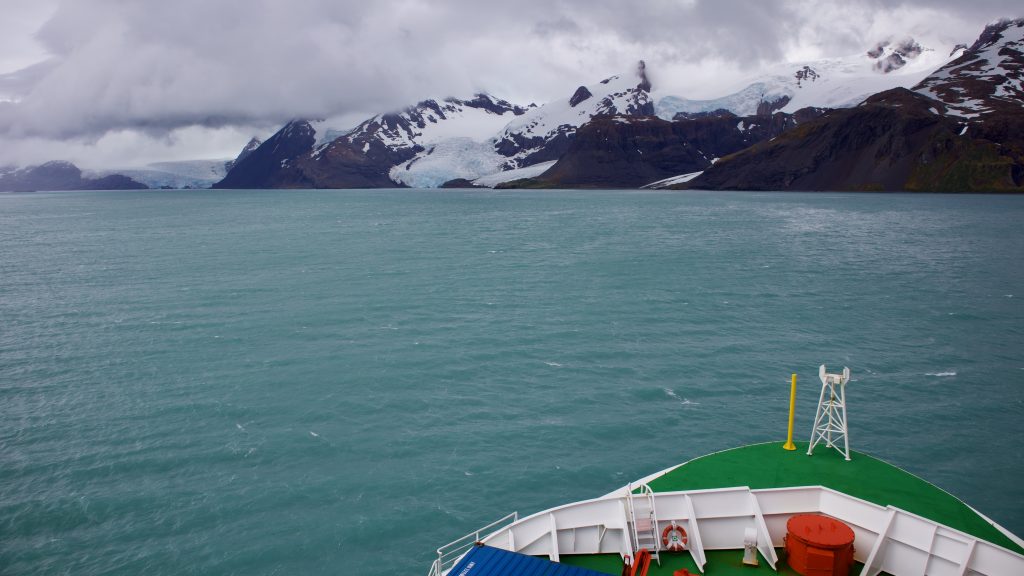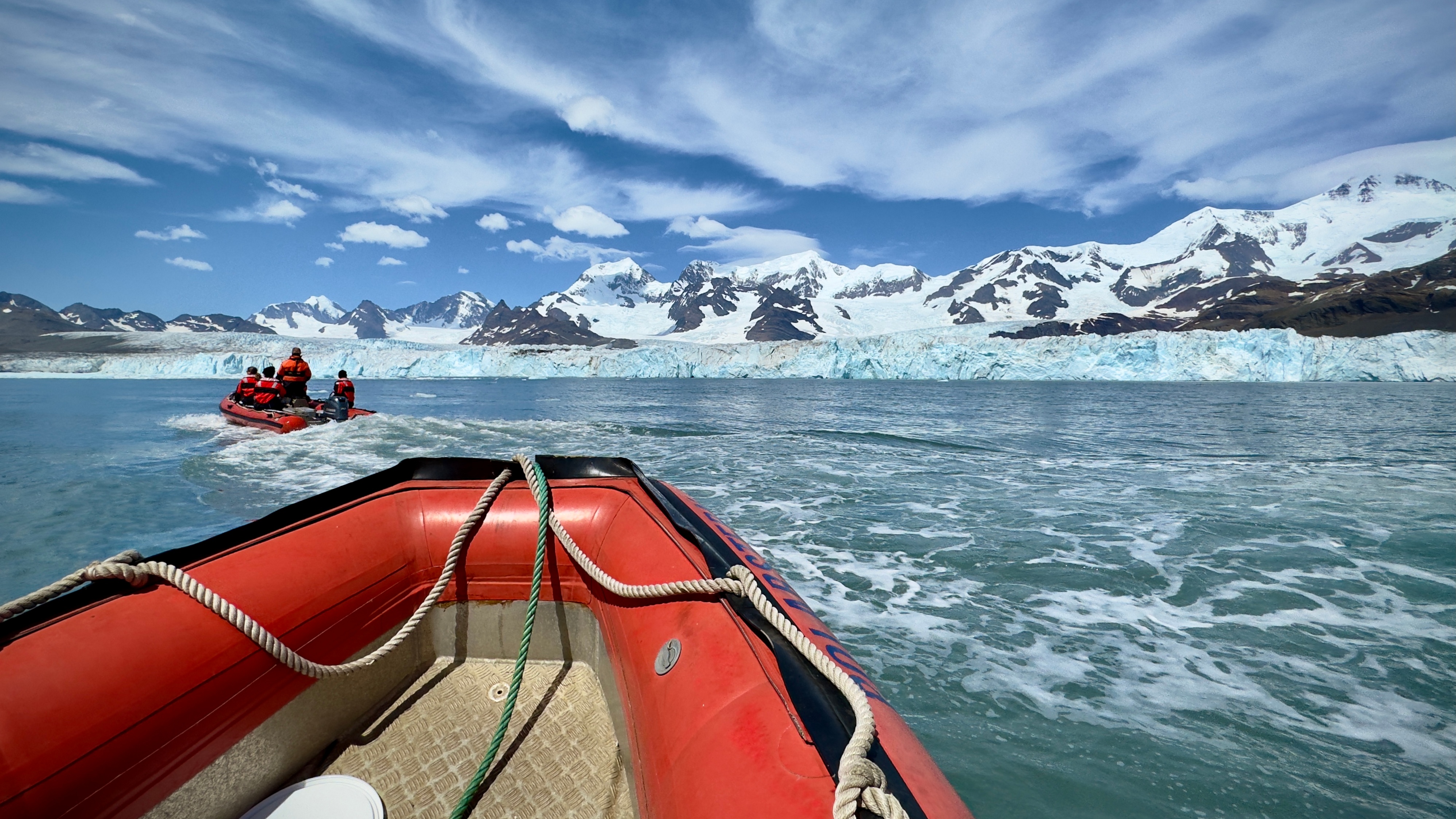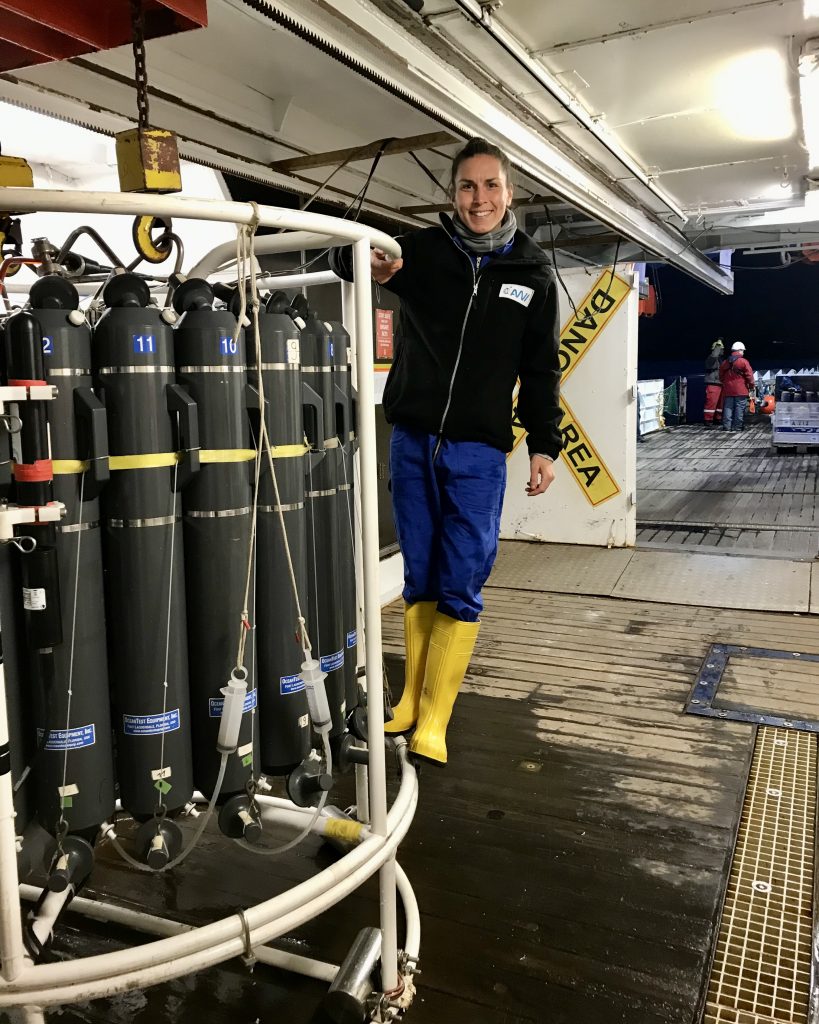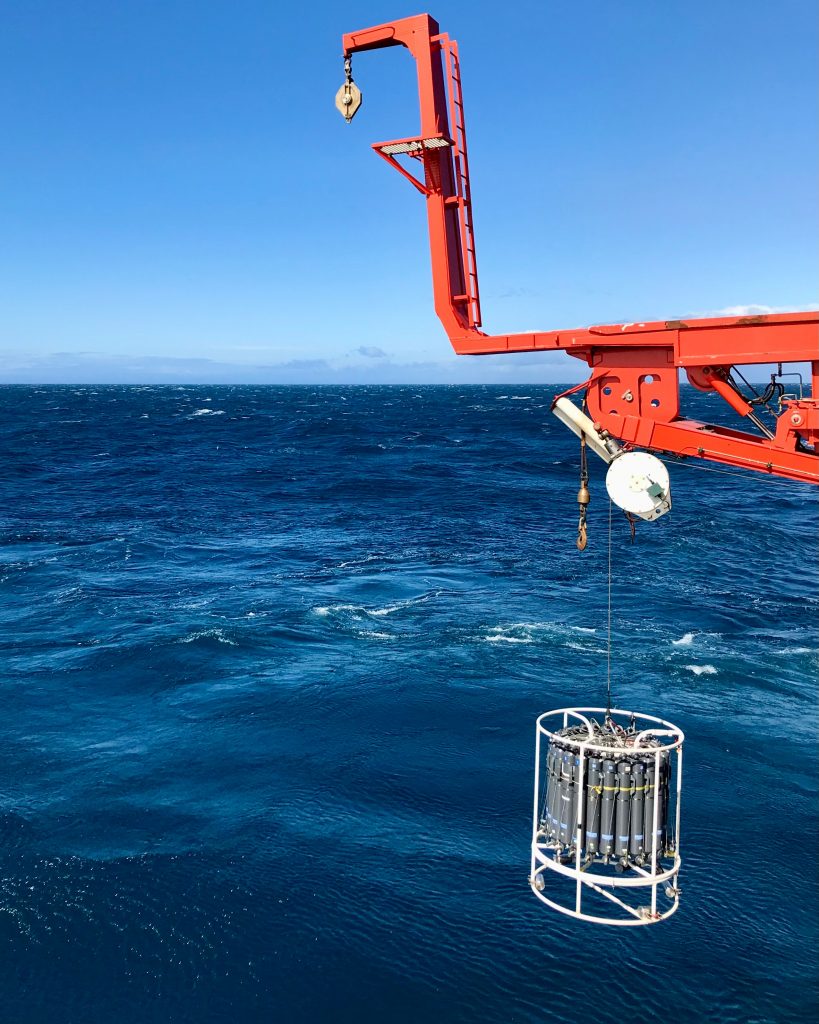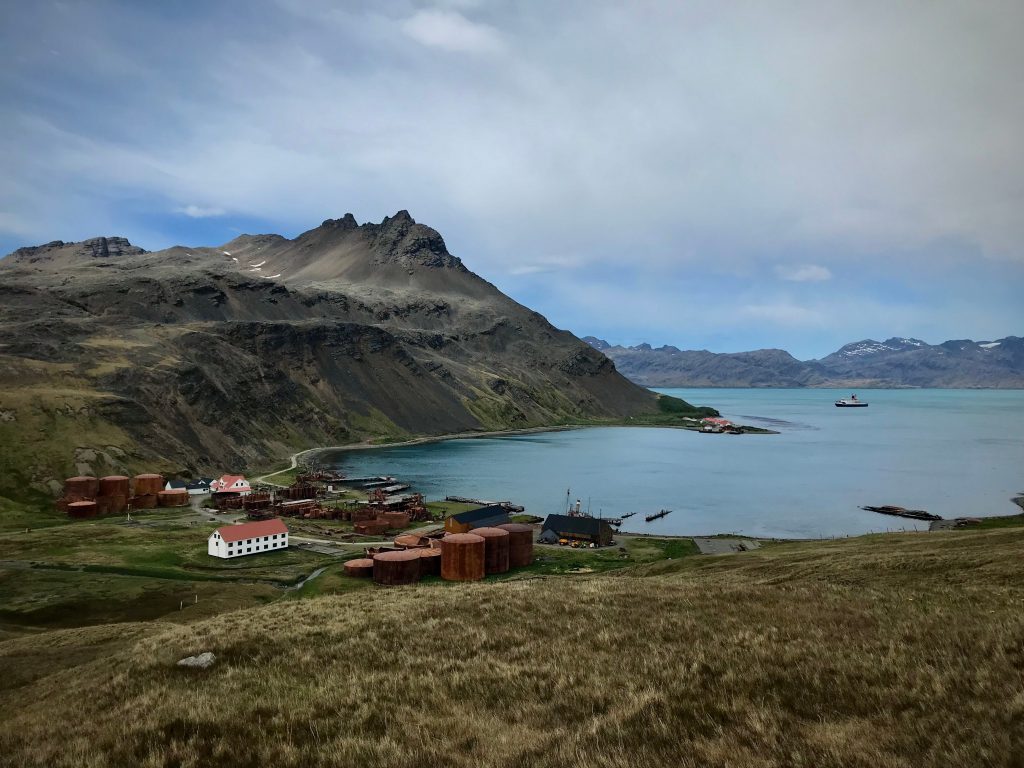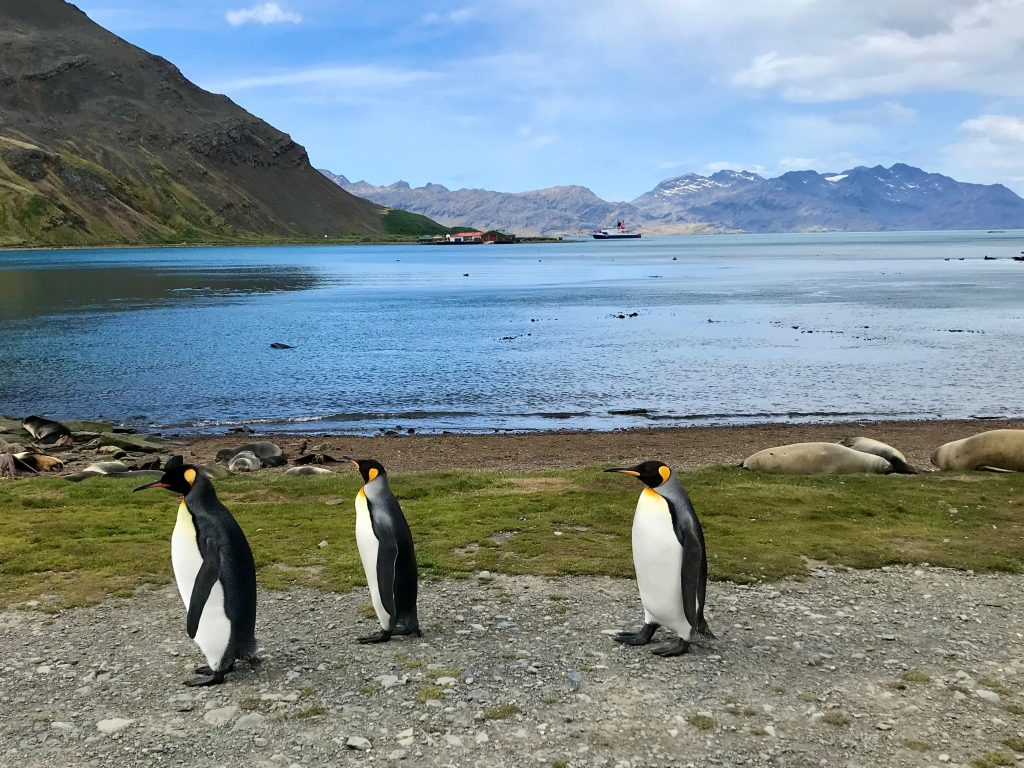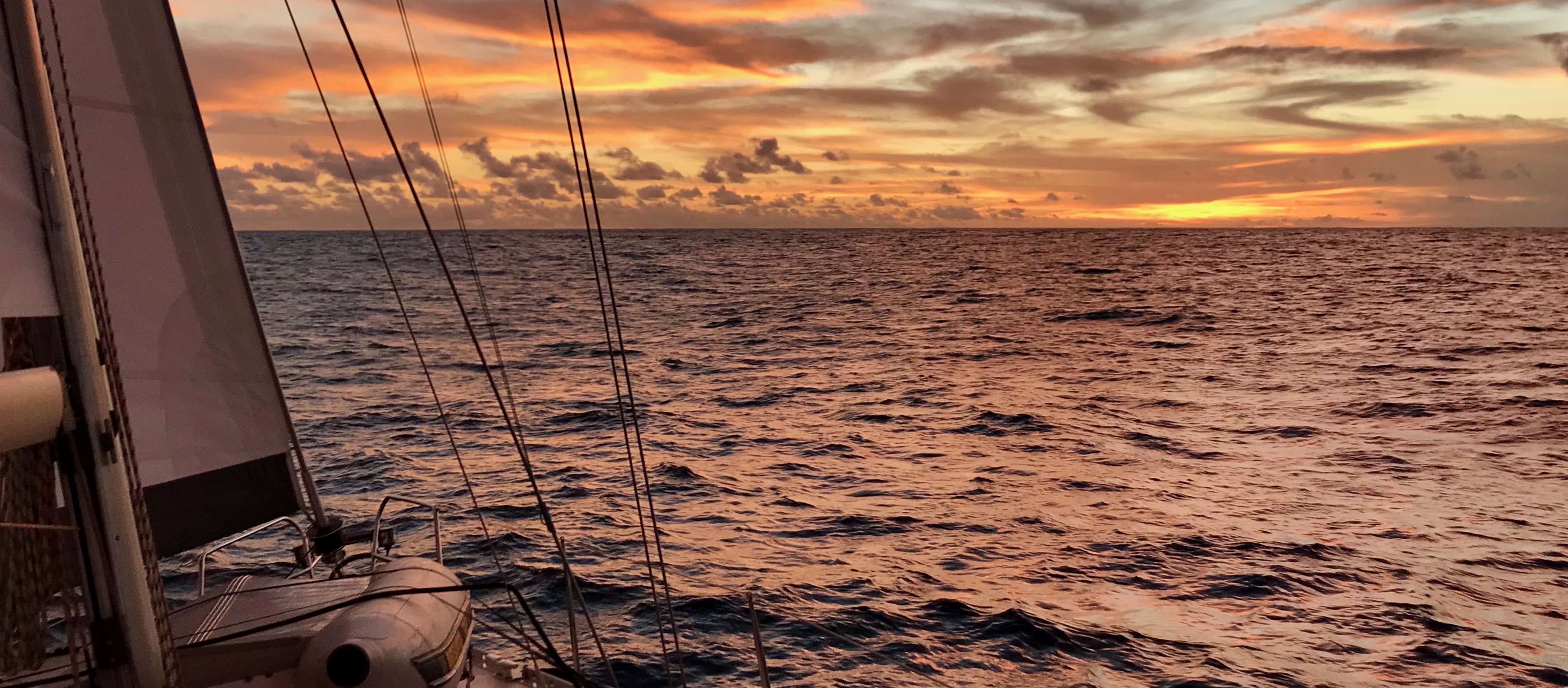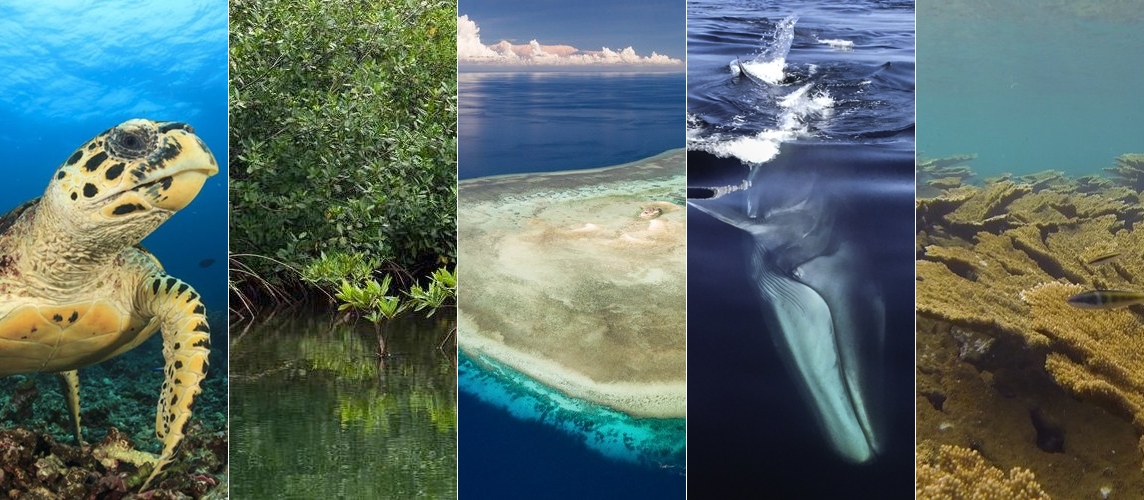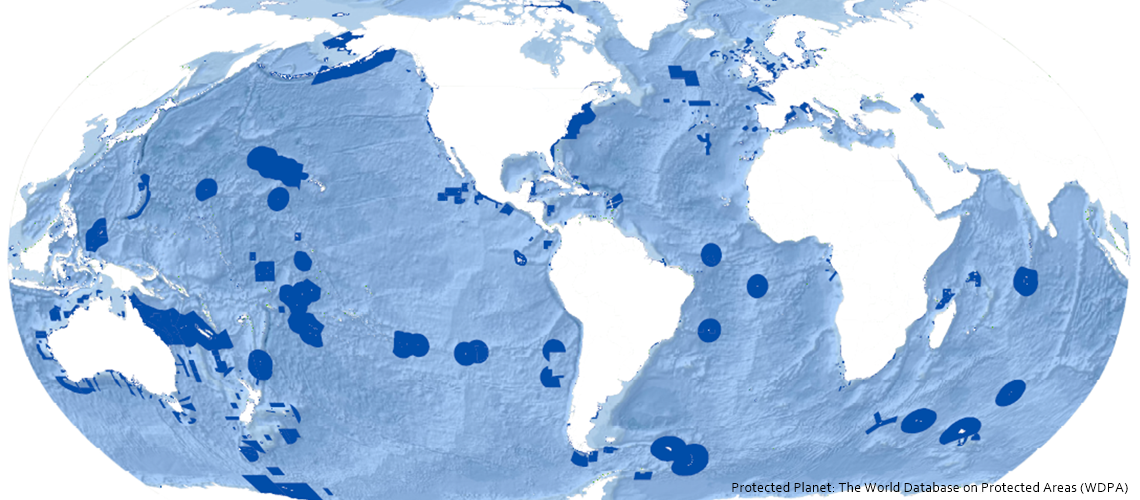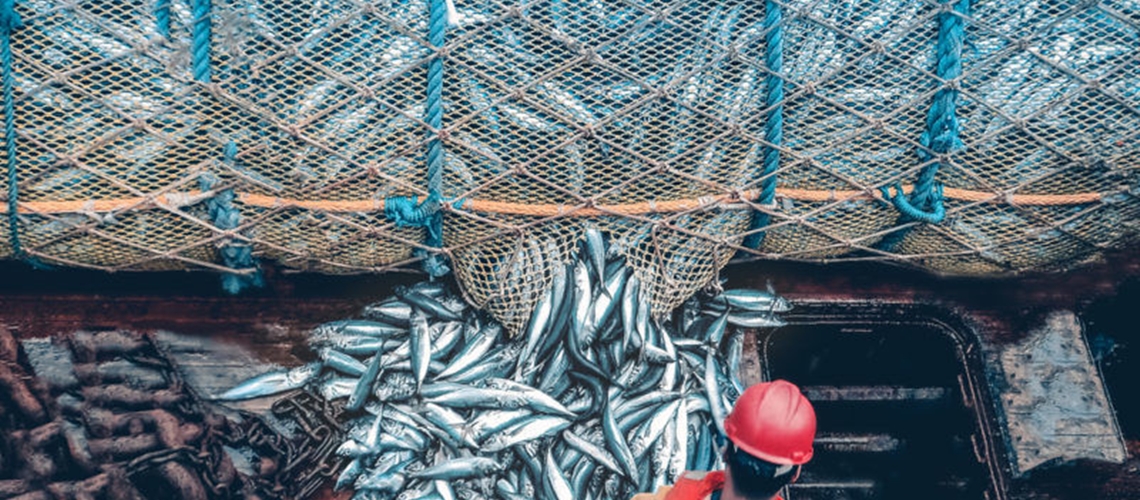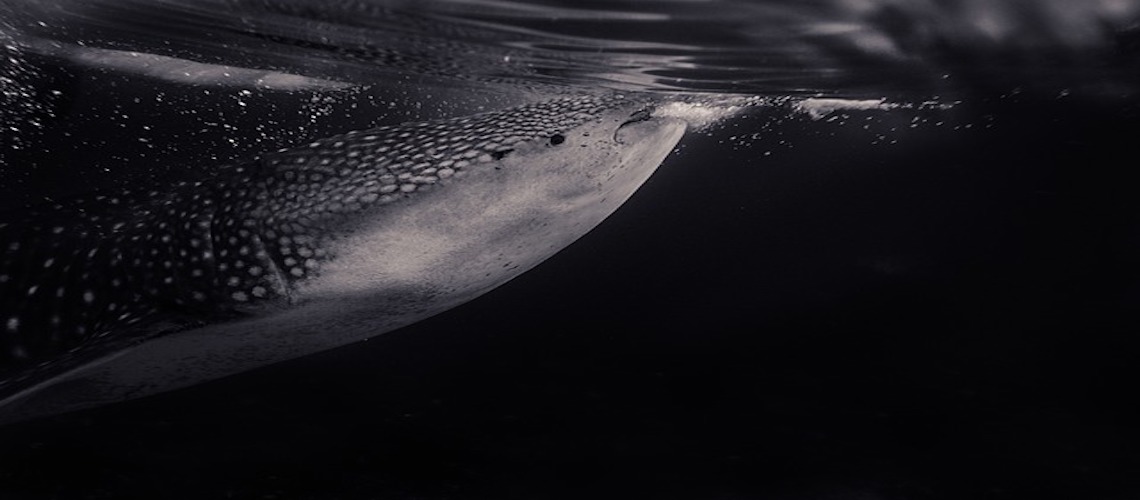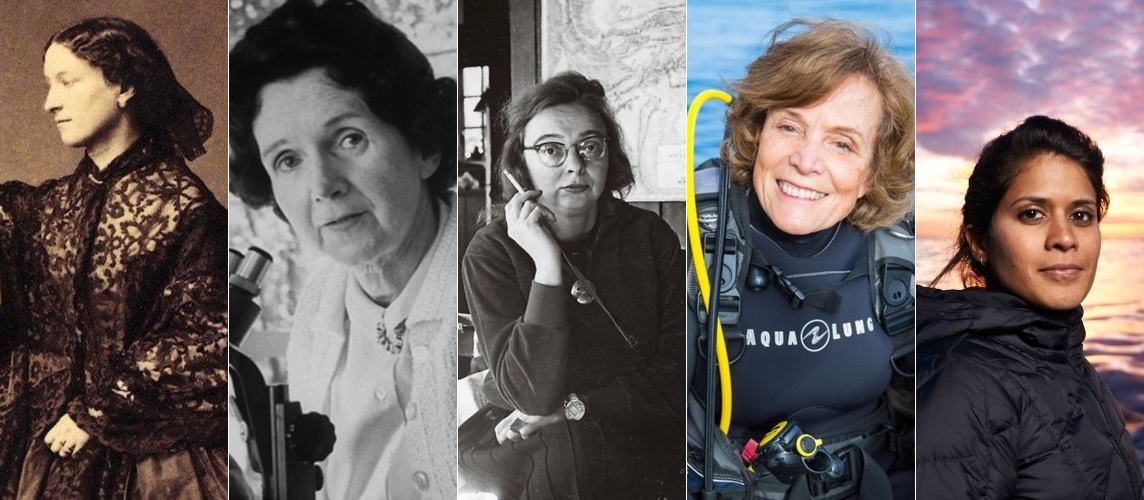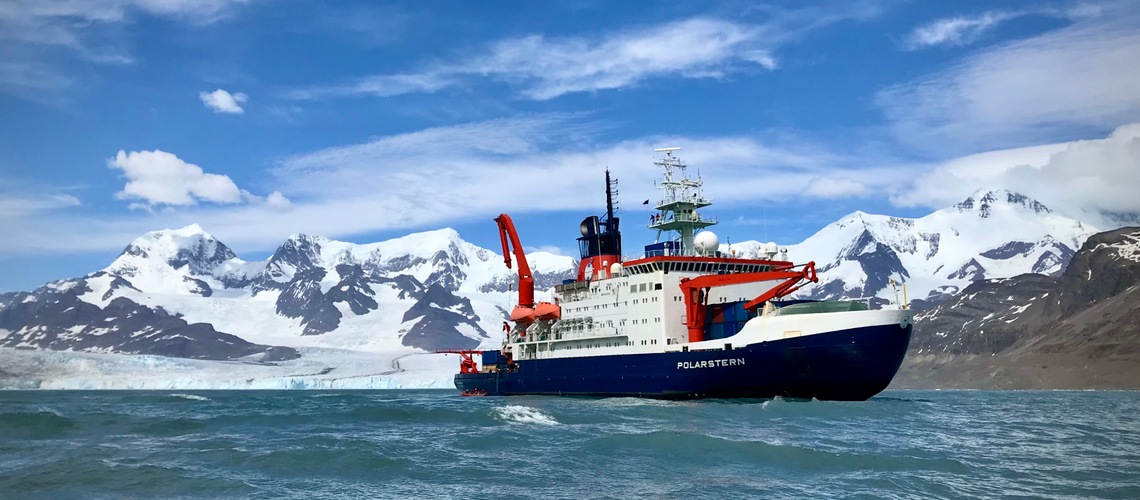
By Joséphine Anselin
At the end of 2022, I had the opportunity to take part in an oceanographic research cruise to South Georgia, an island located in the Southern Ocean about halfway between the coast of Argentina and the Antarctic continent. The expedition was led by the Alfred Wegener Institute for Polar and Marine Research and it involved 50 scientists from 14 different institutions including the British Antarctic Survey, where I am currently pursuing a doctorate. Together, we spent just over four weeks at sea on our floating home-away-from-home, the Polarstern Research Vessel.
The main objective of the cruise was to investigate sources and transport pathways of iron and other micronutrients around South Georgia. The reason why it is important to understand these processes is because micronutrients like iron are required to fuel primary productivity, which in turn plays a key role in CO2 absorption by the Southern Ocean. Extensive phytoplankton blooms (i.e. areas of high primary productivity) are known to occur in the vicinity of South Georgia, but we don’t yet fully understand the processes that supply the micronutrients required to sustain these blooms. The potential processes can be split into ‘shelf sea processes’ occurring close to the coast, and ‘open ocean processes’ occurring further offshore. The focus of this expedition was to investigate the processes originating from the island, like for example methane bubble ebullition, rock weathering and glacial melt.
One of my favorite aspects of this expedition is that it involved collaboration between many different disciplines. In total there 13 different disciplines represented onboard. Each team was collecting data to support the same overarching cruise objective but we were all looking at it from a slightly different perspective. For example, the biogeochemistry and physical oceanography teams were focused on sampling the water column, other teams like the marine geology and biology teams were collecting sediment samples from the sea floor, and there was also a team of marine geophysicists running continuous surveys to map the seabed topography around South Georgia.
I was part of the physical oceanography team and our main objective was to collect water samples and take hydrographic measurements. We used three different instruments to collect the data we needed. The first one was a standard CTD Rosette system. A CTD measures water conductivity (which helps determine salinity), temperature, and depth from the sea surface to the seabed and along the way collects water samples. We also deployed an ‘ultra-clean’ CTD. This system was very similar to the standard CTD in terms of deployment, but the main difference was that the steel frame had been replaced with titanium and plastic to allow tracing of very small concentrations of metals in the water samples. The third instrument that we used was a CTD deployed by hand from zodiacs rather than from the Polarstern. The main reason for the zodiac deployments was to sample glacial meltwater close to the glacier edge. These areas were inaccessible by ship due to the shallow water depth. The zodiac deployments were my favourite part of the cruise because they gave me a real appreciation for the environment being studied, and also for how challenging it can be to generate good quality observational datasets.
And finally, whilst collecting data in Cumberland Bay on the eastern side of the island, we had the unique opportunity to get on land for a few hours to visit the old Grytviken whaling station. This is where the polar explorer Shackleton arrived after having crossed South Georgia on foot to get help to rescue his crew. Shackleton is my favourite polar explorer, so visiting this place was a very special experience.
I am very grateful to have had the opportunity to be part of expedition and I would like to thank Odyssea for their generous travel grant which allowed me to participate in this unforgettable voyage.
Joséphine Anselin is originally from Luxembourg and is currently pursuing a PhD in Polar Oceanography at the University of Cambridge, in collaboration with the British Antarctic Survey. Her current research focuses on improving the representation of ocean-driven melting of Antarctic ice shelves in large-scale ocean models used for global sea level change projections. Follow her on Twitter @joanselinocean
All photos by Joséphine Anselin. Cover photo: The Polarstern Research Vessel on a beautiful sunny day in Cumberland Bay, South Georgia
Related Posts
A Sailing Odyssey
[vc_row][vc_column][vc_column_text] This article is written by Sophie Schönherr, our newest active member and passionate ocean advocate. Her
Read more5 Mieresnaturschutz Erfolleger
[vc_row][vc_column][vc_column_text]Um 8. Juni feiere mir de Weltdag vun den Ozeanen, den World Oceans Day soll
Read more
